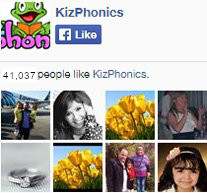Understanding Affixes in Children’s Phonics Education
A Comprehensive Guide to Affix Definition, Meaning, and Examples in Phonics
As children begin their journey through the landscape of the English language, they come across numerous building blocks that help form words, frame sentences, and communicate ideas. One such crucial building block is the affix. At first glance, terms like affix meaning or affixation example might seem daunting, but they're crucial components in a child's phonics education. Dive in with us as we unravel the mystery behind affixes, their definitions, and how they function in our language.
What is an Affix?
In the simplest terms, an affix is a set of letters added to the base or root of a word to modify its meaning. Affixes can be prefixes (before the root) or suffixes (after the root). Understanding the affixed definition provides a lens through which children can decode, construct, and understand a multitude of words.
Breaking Down the Affix Meaning
When we talk about the affix meaning, we refer to the additional layers of context or alterations in meaning that affixes bring to base words. For instance:
1. Unhappy: Here, the prefix "un-" is an affix that turns the base word "happy" into its opposite.
2. Playing: The suffix "-ing" is an affix that modifies the verb "play" to indicate an ongoing action.
Examples to Illuminate Affixation Meaning and Affixation Example
Affixation is the process of adding affixes to root words. Here's a closer look:
1. Affix Example: In "disagree", "dis-" is a prefix affix meaning "not" or "opposite of", giving a new meaning to the word "agree".
2. Affixation Example: When we add "-ful" to "wonder", we get "wonderful", indicating full of wonder.
H2: A Look at Various Affixes Examples and Affixes with Meaning
To further strengthen understanding, here's a breakdown:
1. Prefix Affixes Example: "Pre-" in "prejudge" means "before".
2. Suffix Affixes Examples: "-ment" in "enjoyment" indicates the state of enjoying.
Making Phonics Engaging with Kizphonics
For educators and parents searching for engaging ways to introduce children to affixes, platforms like Kizphonics offer invaluable resources. Interactive games, engaging blog articles, and captivating worksheets make the learning of concepts like affixes example or affixation meaning not just informative but also fun.
Fact Section: FAQs on Affixes in Phonics
What does affixed definition mean in phonics? Affixed definition refers to words that have had affixes added to them to change or modify their original meaning.
Why are affixes important in phonics? Affixes help in word formation, extending vocabulary, and enhancing understanding of word meanings, making reading and comprehension smoother.
Can a word have both prefix and suffix affixes? Yes, words like "unhappiness" have both a prefix ("un-") and a suffix ("-ness").
Where can I find engaging resources on affixes for kids? Platforms like Kizphonics offer a variety of resources tailored to teach children about affixes in an engaging manner.
In conclusion, affixes play a pivotal role in molding the English language. By understanding affixes examples, meanings, and their application, children can decode the complexities of many words, enhancing their reading and comprehension skills. As children venture deeper into the world of phonics, the knowledge of affixes ensures a richer, more insightful linguistic journey.











